A Touch of Class
Mossberg Ups the Ante on its Patriot Rifle
other By: Stan Trzoniec | January, 26
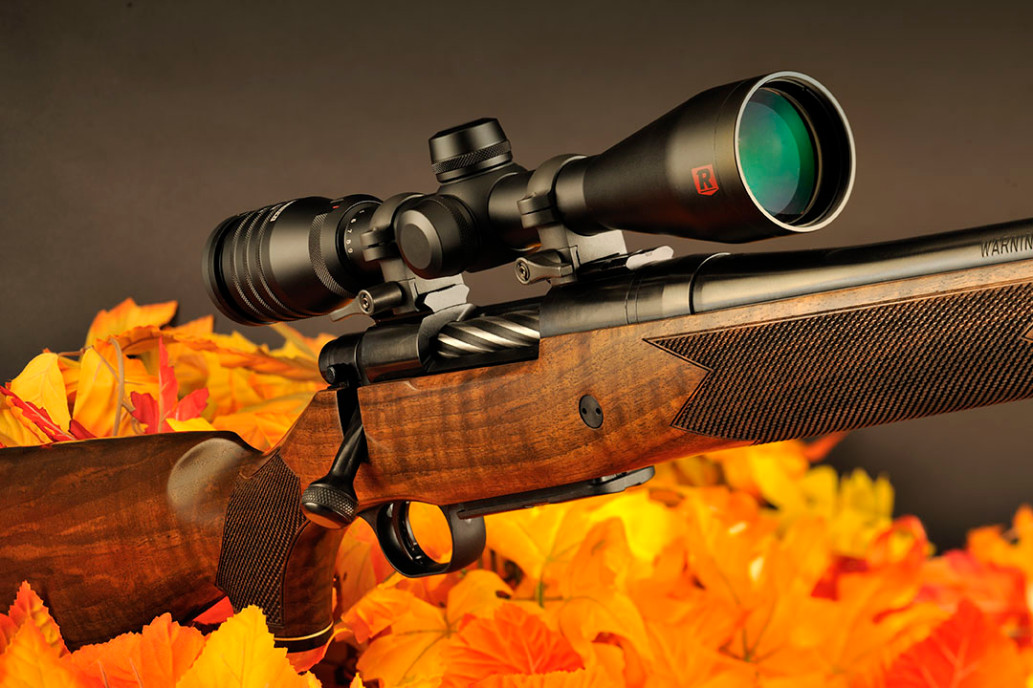
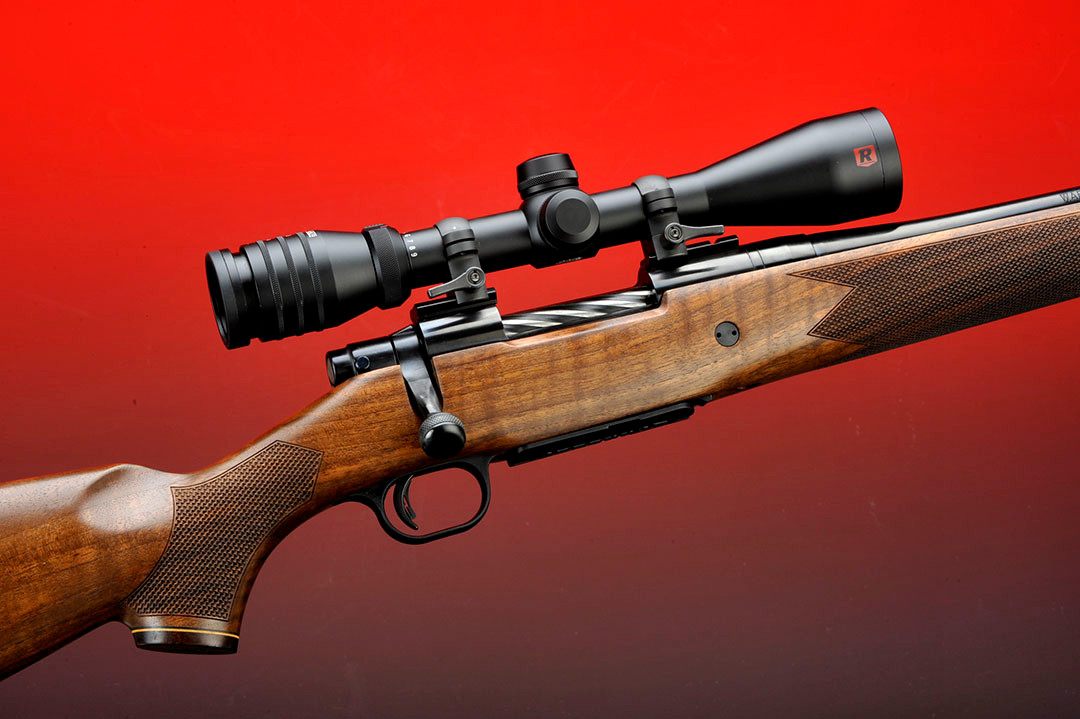
While the basic Patriot rifle has been in the Mossberg line for quite a while, the Revere is a nice addition. This company has come a long way over the years, and one look at their extensive 100-page catalog bears this out. Starting out in 1919, Oscar Mossberg, who seemed to be one step ahead of everyone else at the time, introduced the “Brownie,” a .22-caliber pocket pistol with a four-shot capability. With only a $6.00 price tag, it proved to be a mainstay in the company for 13 years with a production number exceeding 32,000 pistols. Even through the Great Depression, Mossberg kept the fires going with economical and sturdy guns to the tune of a total output of over a million guns with a payroll of more than 300 employees. In 1962, the Mossberg 500 pump shotgun was introduced and since then, it has proven itself with more than 10 million in sales. Presently, the company has now grown to include everything from shotguns in various sporting and law enforcement models to sporting rifles; a host of rimfire guns and the company just recently entered the handgun field.
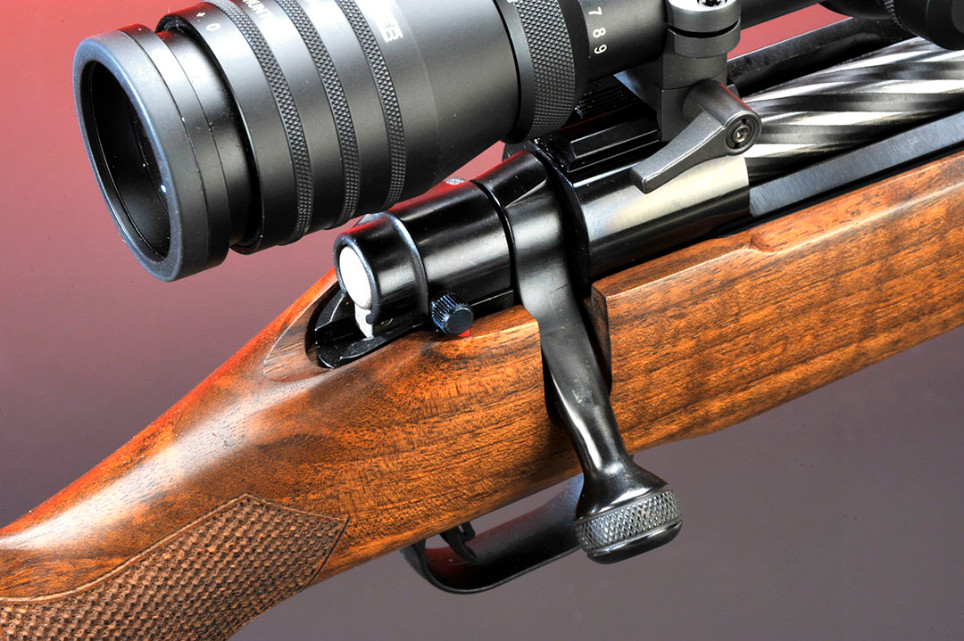
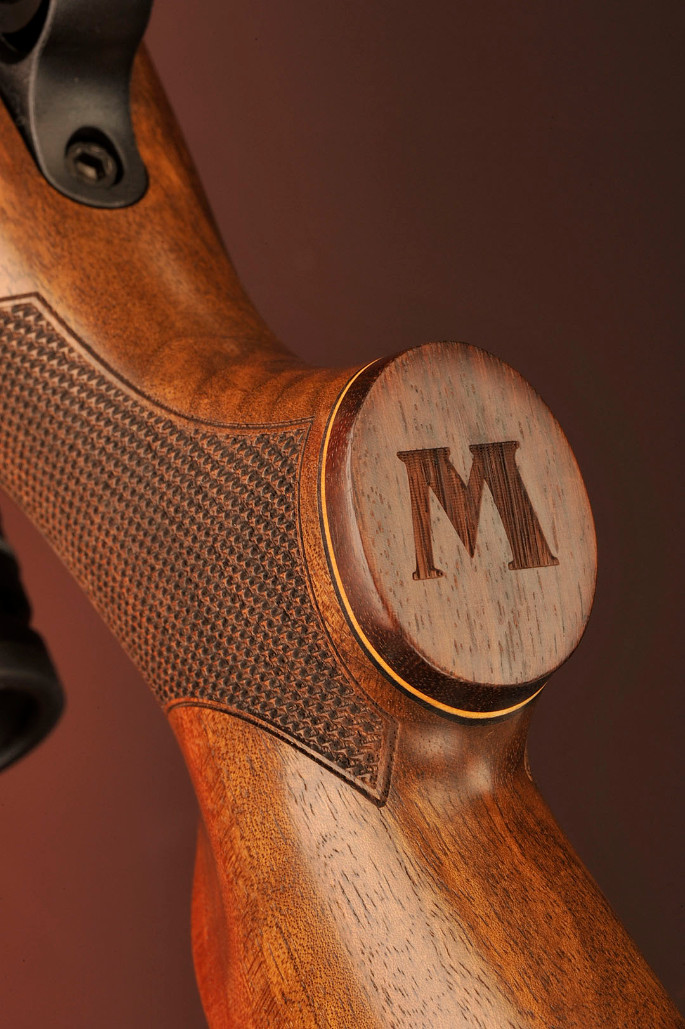
Moving on, the company had the Model 4X4, the ATR and the MVP – then the Patriot around 2015, which brings us up to the present timeline of production bolt-action guns by Mossberg. The Patriot has been a very successful rifle with models and chamberings to suit varmint hunters to big-game enthusiasts in both wood and synthetic version with or without a scope as a package gun. Sensing something was still missing, they entered the high-end market with the Patriot Revere.
The result is a gun that may look like the rifles made years back with high gloss finishes, forend and pistol grip caps complete with white line spacers. Truth is, this could be the gun, but brought up to modern standards it’s a rifle that will bring tons of pride to its owner, especially for those who like this particular look in a firearm. Available in both a short and long action, chamberings include the .243 Winchester, 6.5 Creedmoor, .270 Winchester, .308 Winchester, the well-liked .30-06 Springfield and .300 Winchester Magnum.
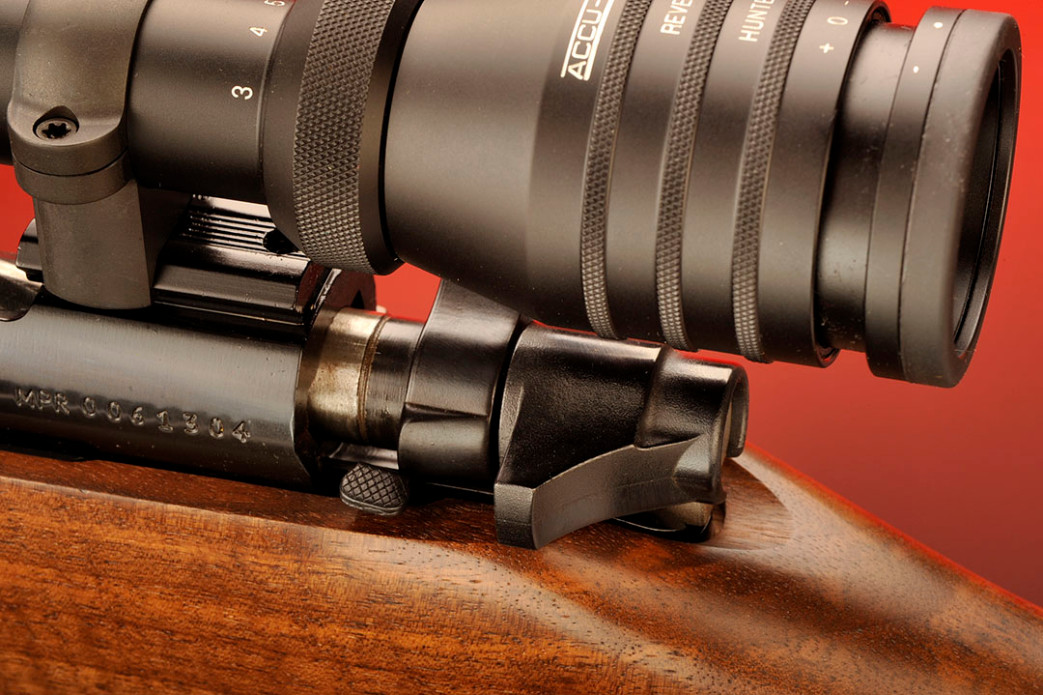
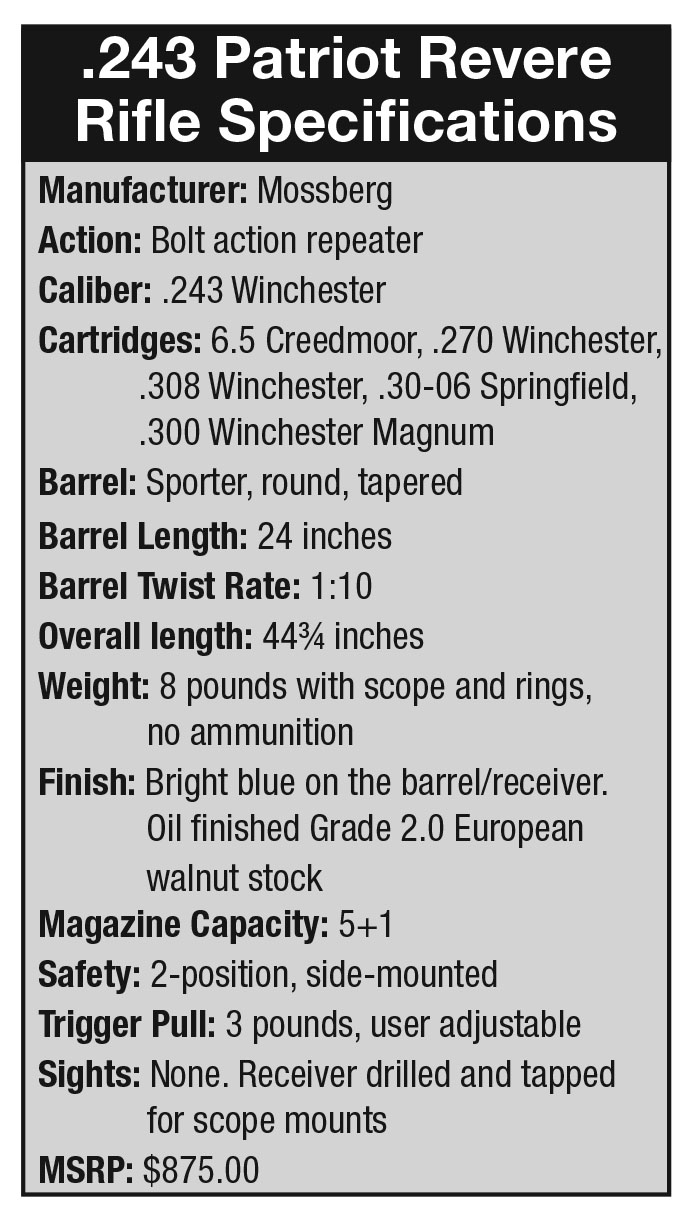
The overall profile of the gun is true classic, much in vogue today. While there is a cheekpiece on the stock, there is no line disturbing Monte Carlo hump to mar the traditional lines of the gun. The forend tip is rosewood, carefully formed to add class to the gun and complimented by a white and black spacer. Moving back, many might find the forearm a bit on the beefy side, something I have no problem with, and it is close to the dimensions I use on any custom rifle I order. Additionally, there is more than an ample supply of checkering in a point pattern that covers both sides and bottom in this area.
Under the receiver, the belly of the stock broadens out a bit more to contain the magazine, magazine well and trigger guard assembly. Closer to the receiver, the stock is relieved for the ejection of spent cartridges and the safety, on the left side for the bolt release and to the rear at the tang for bolt clearance when loading or unloading cartridges. The pistol grip has a moderate swell on both sides, has been designed for both offhand and prone shooting, and again, has a generous supply of machine checkering in a handsome pattern complete with a border. Below is the pistol grip cap in rosewood with spacers with the Mossberg “M” finely laser cut into its base.
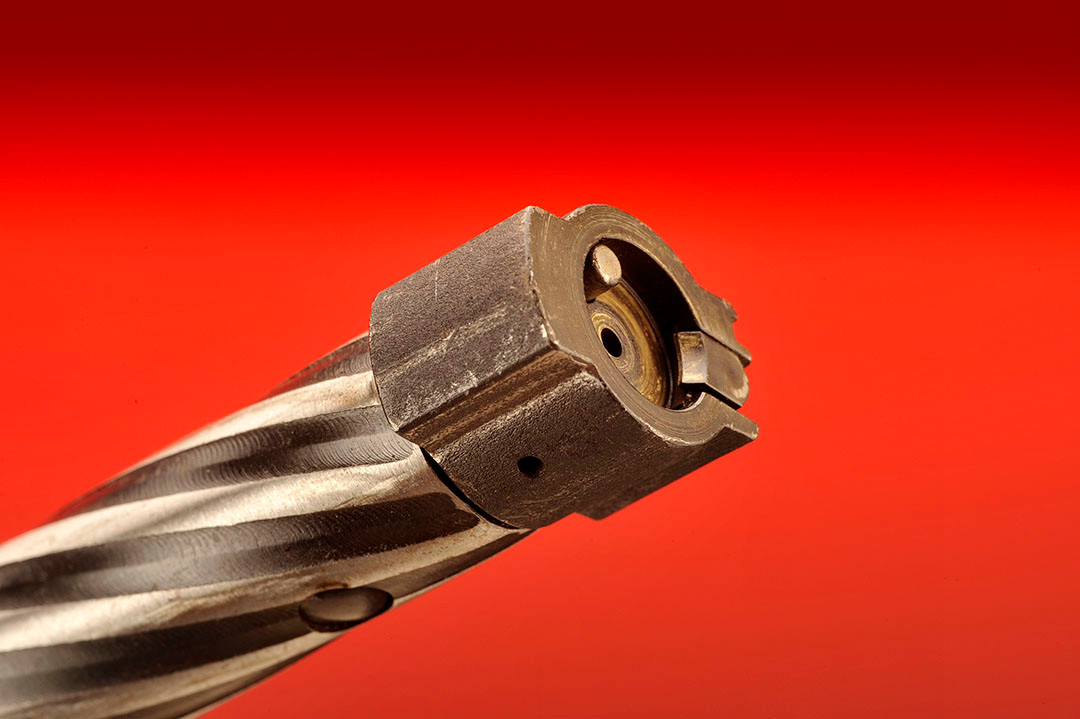
When it comes to the action, Mossberg has refined it to the point of not only being very smooth in operation, but with more than enough features to make the most dedicated rifleman happy. Checking in at 7 pounds sans the scope and ammunition, the 24 inch, .620-inch diameter tapered barrel terminates with a target-type recessed crown on the muzzle end, all secured to the receiver via a smooth barrel nut just in front of a washer type recoil lug. No sights are furnished, but the gun comes standard with factory installed Weaver type mounts to which I added a Redfield Accu-Range 3-9x 40mm scope in detachable rings.
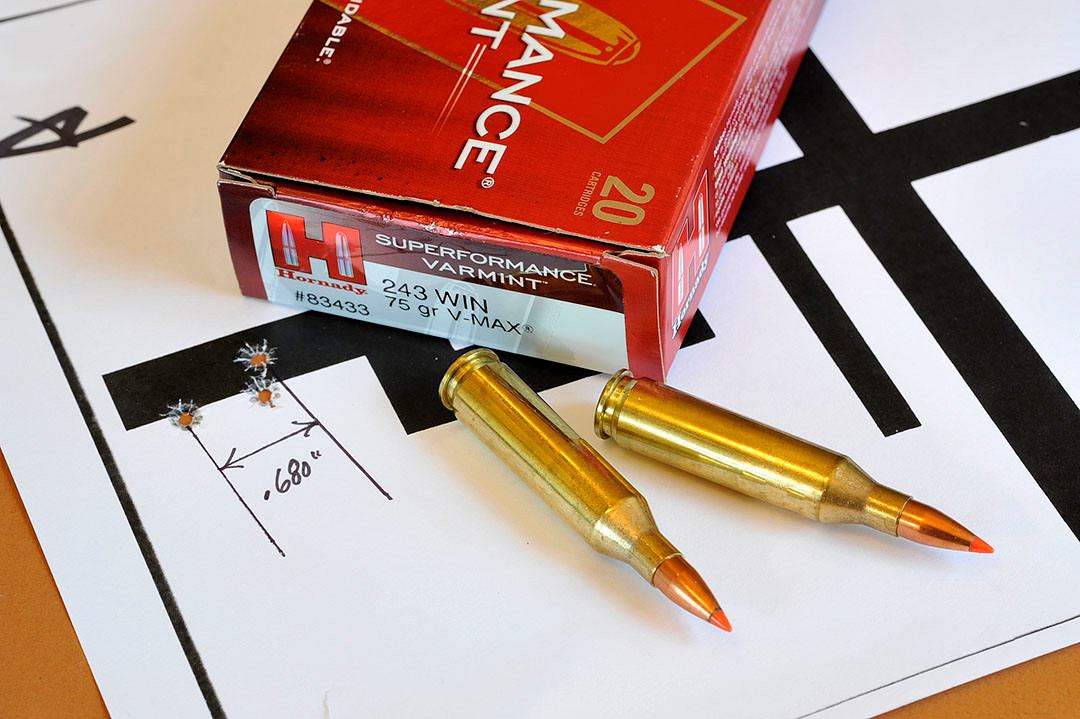
Like many in the industry, the receiver is machined from round bar stock, polished and blued to match the barrel. At the right rear is the safety complete with an audible click in each position as well as the traditional red (danger) dot. Forward to fire and back locking the sear while still allowing the motion of the bolt to eject, change or add rounds to the gun. On the left side of the gun is the bolt release, which is protected by a shroud preventing a false move by the shooter, thus releasing the bolt on the way to charging the gun again.
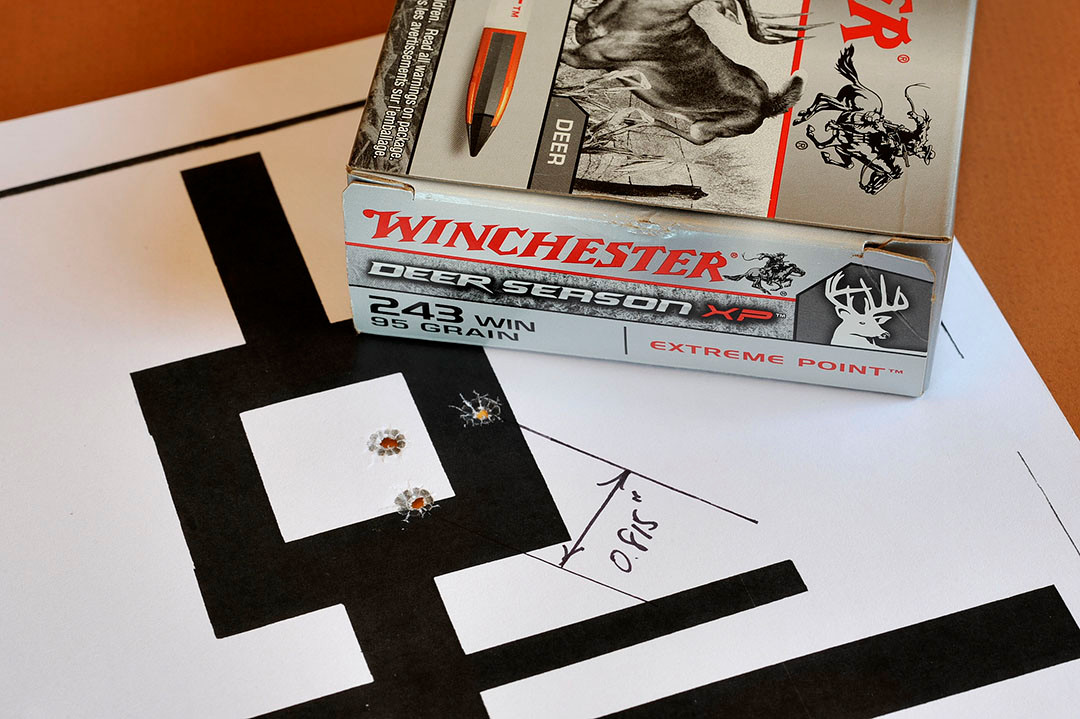
Finally, the Revere is equipped with a 5+1 round polymer magazine that is easy to load, insert and retrieve from the gun. All of the bottom metal is the same material that includes a bedding insert within the rifle for accuracy. To me, this is a high-end rifle and would justify a metal trigger guard and magazine well leaving the polymer magazine as is. To me, the polymer magazine is a great tool in the field as dropping it shows it is not prone to damage, dings or misalignment as some of the metal magazines are and much easier to maintain and silent in the pocket. Using the rifle, I found the magazine easy to load and experienced no problems in feeding or ejection from the gun.
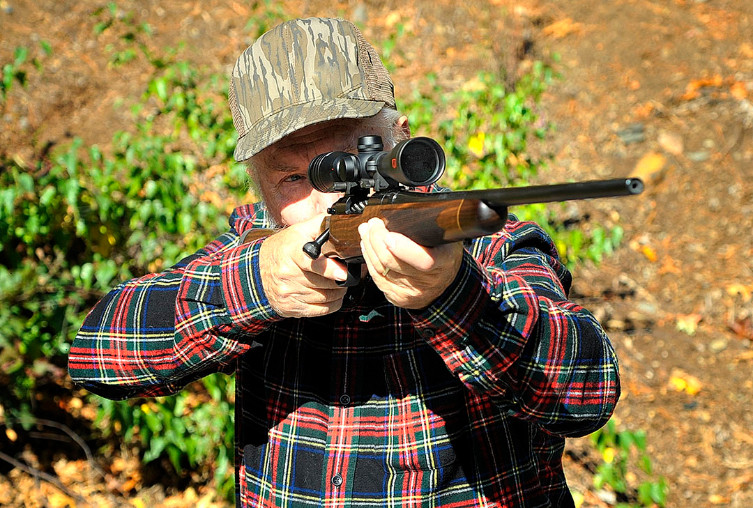
On the range and chambered for the .243 Winchester, the extra heft of the gun made shooting a pleasure on the bench with no problems in the operation of this rifle. The LBA trigger helped to ensure good groups with factory ammunition and once zeroed-in, delivered the goods downrange. The design of the gun was perfect for my average stature and I would feel very comfortable using this gun on small to medium (pronghorn antelope for example) game in the field. I have handloaded this cartridge with bullets from 58 grains upward with great success culling woodchucks and a good friend of mine took his .243 to Wyoming on a hunt loaded with 100-grain Nosler bullets and never missed a shot.
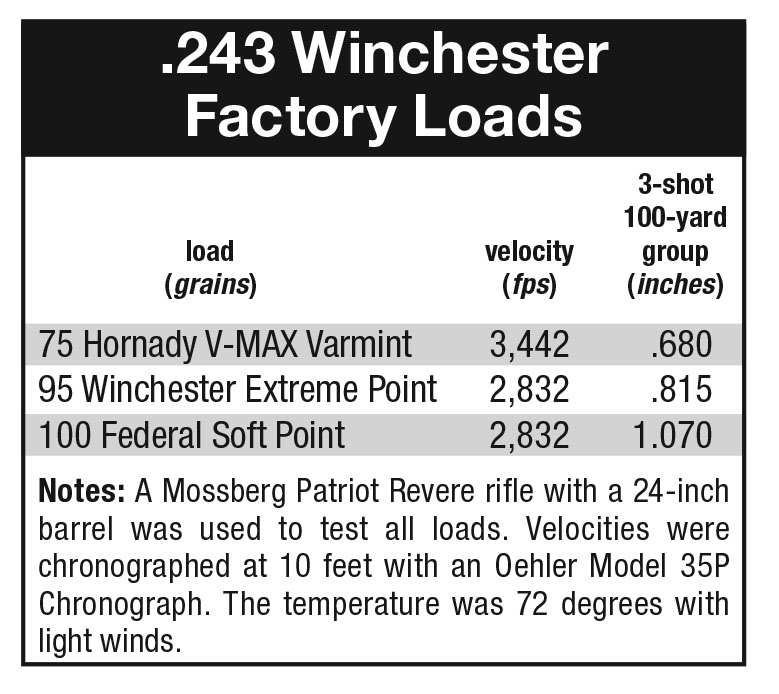
Considering what might be coming up next spring, I picked a few samples from my gunroom. With light bullets, the Hornady 75-grain V-MAX SuperPerformance Varmint came in with the best group of the morning at .680 inch with 3,442 fps on the Oehler chronograph. Moving up in weight, Winchester’s 95-grain Extreme Point Deer Season brand printed .815 inch with a velocity reading of 3,053 fps. Finally, the Federal 100-grain softpoint squeaked by with a 1.07 inches group at 2,832 fps. No complaints all-around.
Cleaning the gun at home, I found no reasons why I should not own the Mossberg Patriot Revere rifle, but if my feet were held to the fire, the only thing I would change is to add is a non-ventilated, classic recoil pad to this rifle. The rifle is well-made, good-looking, operates smooth as silk and for my chores in the field, is perfect for my needs. I know after you look at one, you’ll feel the same way.

